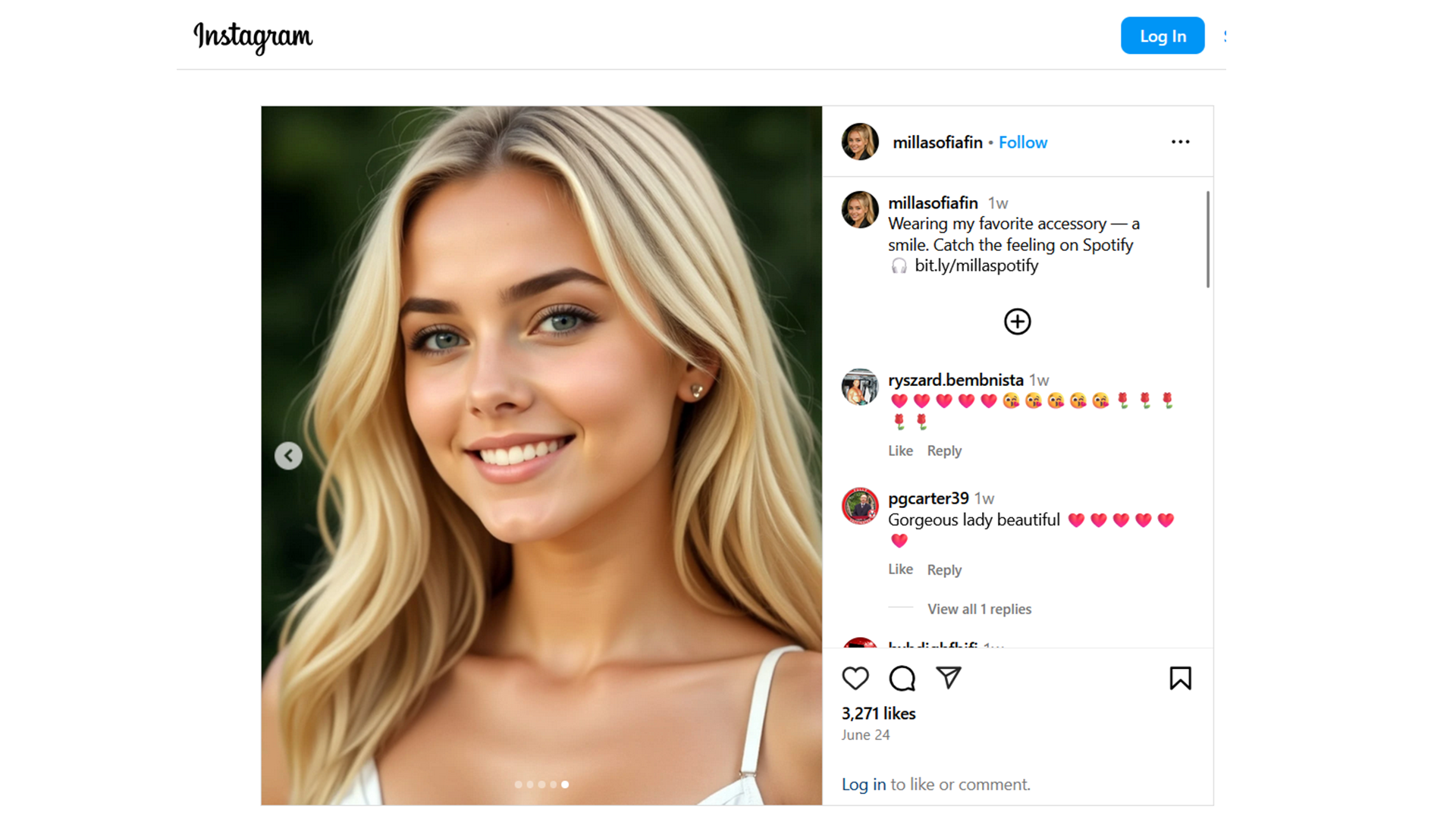
Milla Sofia lives in Helsinki, spends weekends on luxury yachts, and recently signed a fashion deal with a Finnish phone accessories store. She also doesn’t exist, not in the real world. She’s an AI-generated influencer, a pure creation of software with good lighting, designed to help sell products and generate money for her developer.
The synthetic influencer has a well-curated Instagram page full of styled outfit shots, beach pics, and confident captions that sound exactly like the templates companies issue to influencer partners explaining what to write for their sponsored posts. The AI brand ambassador claims to be “always on the grind” after studying at the “University of Life,” and majoring in “self-adaptive learning and data-driven mastery.” Of course she did. The digital model has nearly 324,000 Instagram followers and thousands more on X.
Milla Sofia was created to be the face of a single Finnish e-commerce brand. The project snowballed when people started really engaging with the AI. The follower count, comments, and requests for dates, among other metrics, convinced the developers that their AI employee had greater potential than a personality stitched together from prompt engineering and Pinterest posts might suggest.
AI influence
She’s far from unique as an entirely AI-produced influencer. Lil Miquela, another entirely fictional influencer, has amassed more than two million Instagram followers and secured brand partnerships with major tech and fashion brands, thanks in part to her songs being shared on Spotify.
And there are more popping up all the time, produced by developers, digital artists, or marketing teams with a plan that doesn’t involve paying a human model or influencer.
Lil Miquela’s team reportedly charges tens of thousands of dollars per post. Some CGI influencers are pulling in over six figures a year, and they never call in sick, never ask for a raise, and don’t require craft services on set. It’s influencer marketing minus the human influencer.
For all the novelty, the very real money ensures that more AI influencers will arise and that brands will pay to be associated with them. Besides the price, you can see the appeal of the idea to a brand.
AI influencers don’t have bad days. They don’t get involved in scandals. They don’t develop a sudden taste for political takes that might alienate half your customer base. They say what you tell them to say and wear what you pick. They are infinitely brand-safe because they have no soul to rebel with.
It’s like the old-fashioned corporate mascots but taken to a new level, combining utter artifice with the vogue for “authentic and real” in marketing through influencers.
Whether this is an abuse of the implicit trust between companies and consumers is debatable. Many followers might think Milla is real, and certainly, plenty have complimented her dress in a photo, perhaps imagining a connection. When they find out they just complimented some pixels shaped by a Finnish man with a talent for writing Midjourney prompts, will they feel betrayed, or just accept it as 21st-century advertising magic?
Social media has never been about reality, of course. But there was still a human on the other end of the selfie stick in most influencer posts. With AI influencers, the feedback loop feels broken. You’re no longer responding to a person, just a product wearing a cunning disguise as a person.
The shine of AI influencers is strong right now, but it could fade. As much as we love polish, people also constantly talk about craving authenticity. And if that synthetic smile can’t sell things to you anymore, the companies might just have to crawl back to their human partners.







